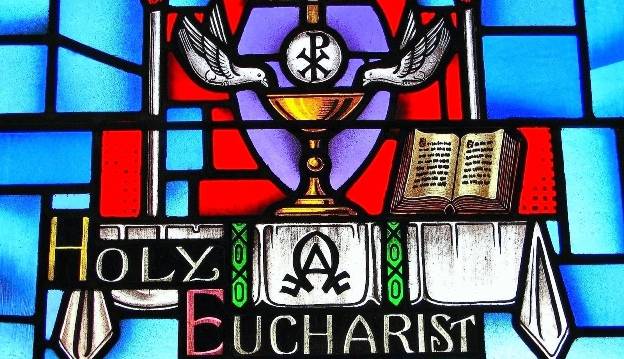Headed in the wrong direction
On the 18th of December 2020, Buddha Air1 took off from Kathmandu Airport with 70 passengers destined for Janakpur, a city in southeast of Nepal. But the passengers were in for a shock when the flight landed instead in Pokhra, 225 km northwest of their intended destination! Now why this confusion in destination happened is interesting. The flight had been originally been destined for Pokhara. But there had been some bad weather and therefore to make up for lost time, the Airline officials had decided to fly to Janakpur first and then, later to Pokhara. So they changed the flight plan and flight number, got clearance from the Air Traffic controllers, informed the passengers but forgot one crucial step – to inform the pilots! So, the pilots flew to the destination they were originally communicated to!
A simple miscommunication led to an entirely different destination!
This story reminded me of the sad and unfortunate miscommunication about the Sacrament of Holy Communion. The change in communication and understanding of the Eucharist from being a reality (remembrance) to being merely a symbol (memorial) has carried many to an unintended destination.
In the last article we learned that the letter ‘R’ in the acronym – M E R C Y stood for remembrance. And the reason we fight for keeping that word is because, our ‘destination’ in celebrating the Eucharist during the Divine Liturgy is ‘not merely to be reminded of Christ’s incarnation, death and resurrection; but to experience and partake of it in the here and now.’
But because of the unfortunate misunderstanding that the Eucharist is merely a memorial – a sort of representation of something which happened in the remote past – many have sadly missed God’s best for their lives.
History of Memorialism
But when did this unfortunate ‘replacement’ of words begin, what were the ramifications of it and how can we right the wrongs caused?
For the first 16 centuries, the entire Christian Church affirmed the true presence of Christ in the Eucharistic elements. It was only when one of the protestant reformers2, began to teach that the Eucharist is more about the presence of Christ in the minds of people instead of His presence in the elements3, that the ‘destination’ of the Eucharist began to be changed.
The ’Memorialists’, as they were called, viewed Jesus’ words in St. Mathew 26: 26-28 as metaphorical and that He was teaching His disciples to simply remember His sacrifice on the cross4.
The dangerous ramifications
a) The Symbolic Sacrament.
The consequence of this was that, what was real, became a symbol. What was meant to be a remembrance – something which was to be re-lived, something which was to be brought into the present from the past, became merely a memorial – something to be reminded of. Soon it became individualistic and a subjective or personalized experience. Thus, depending on the creativity of the individual, the type of personality, his individual experience etc., the Eucharist became an intensely satisfying experience or a distant and unrealistic ritual. It’s sacredness was lost.
No wonder that in just 4 centuries, you could have ‘chips’ and ‘juice’ and simply ‘remember’ or ‘recall’ Christ’s sacrifice in your mind – because after all, it’s only a reminder, nothing more.
b) The sacrament became subjugated to the sermon.
I remember many, many, years ago, in the protestant church I grew up in, as soon as the Sunday sermon finished, kids like me would pack up our bags and be ready to go home! And for the adults, it was like – the main time is over. Actually, the main time was not over, but no one realized that that was the main part of authentic Christian worship!
This is another direct consequence of the downgrading of the Holy Communion from a remembrance to a memorial, that by default, the ‘message’ or the ‘sermon’ became the highlight of the service. The sacrament became subjugated to the sermon. And the visual manifestation of this was when the Eucharistic table moved away and the preachers podium took centre stage – literally.
Partaking of the Eucharist is the main reason why we come together. That is why the gathering of God’s people is referred to as the ‘Eucharistic Assembly!’
The Centrality of Christ
If a complete stranger were to walk into our church during the Divine Liturgy, what would he understand as the object of our worship? It cannot be that he sees the preacher and his podium or the choir and the instruments taking centre stage. Man should not be at the centre, God should be.
For the ancient church, everything revolved around Christ and His sacrifice. That is why starting in the catacombs, the faithful would gather around the ‘body of Christ’ – represented in the bread and wine. And as the church became established, the central position was always reserved for the Eucharistic table.
As Orthodox Christians we (the faithful) are the body of Christ and when we gather together, we gather around the body of Christ (the Eucharistic elements).
To recollect what we have seen thus far:
M stands for Mystery – mystically the Eucharistic elements become the body and blood of Christ;
E stands for Elevation – we are elevating (lifting up) ourselves and offering ourselves as gifts during the Eucharist and
R stands for Remembrance – whenever we celebrate the Divine Liturgy, we return spiritually to be with Christ at the Mystical Supper, the Cross and at the Resurrection.
Click here to read the 1st part of this devotional.
Click here to read the 2nd part of this devotional.
Click here to read the 3rd part of this devotional.
Click here to read the 4th part of this devotional.
1https://indianexpress.com/article/trending/trending-globally/nepalese-airline-files-passengers-to-wrong-destination-7118409/
2https://en.wikipedia.org/wiki/Memorialism
3https://en.wikipedia.org/wiki/Memorialism#cite_note-Riggs-13
4https://www.gotquestions.org/memorialism.html



